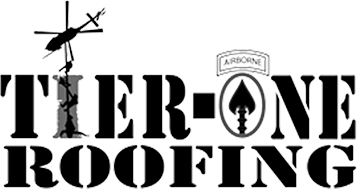Tulsa Roofing: Making Sense of ACV insurance policies
Is your roof ready to weather the storm? Accurate coverage can make all the difference when dealing with roofing damages and repairs.
Understanding your ACV insurance policy is crucial.
Tier-One Roofing is dedicated to providing unparalleled expertise and guidance in navigating the complexities of ACV insurance for your peace of mind.
Demystifying ACV in Roofing Insurance
In the realm of roofing insurance, Actual Cash Value (ACV) policies are a nuanced financial product that requires meticulous understanding. To the untrained eye, such policies may seem enigmatic, but they are based on straightforward principles. ACV insurance takes into account the age and condition of your roof, providing reimbursement based on its current, depreciated value at the time of loss. It's vital for property owners to grasp the intricacies of ACV coverage to ensure they secure the appropriate protection for their valuable asset, the roof that shields everything underneath.
Defining Actual Cash Value
Actual Cash Value (ACV) terms, within insurance lexicon, articulate coverage tethered to the asset's depreciated worth.
In the insurance realm, ACV equates to market value less depreciation, reflecting a property's current valuation.
ACV is not a static figure but a calculation reflective of time and wear, and thus intersects with the concepts of depreciation and market dynamics.
Understanding ACV necessitates appreciation of depreciation, a fiscal measure subtracting time's toll from original value, yielding a truly current estimate.
ACV vs. Replacement Cost Coverage
Understanding the difference between ACV and Replacement Cost Coverage is crucial in roofing insurance.
- ACV (Actual Cash Value) policies consider depreciation, offering a payout that reflects the roof's current worth.
- Replacement Cost Coverage does not account for depreciation, aiming to cover the full cost of a new roof equivalent in quality and kind.
- Depreciation Factors: ACV calculations include factors like age and wear, reducing the payout amount.
- Premium Considerations: Typically, ACV policies have lower premiums compared to Replacement Cost Coverage.
- Settlement Differences: ACV settlements may not fully cover the cost of roof repairs or replacement.
ACV policies can result in out-of-pocket expenses since they may not cover the entire replacement cost.
Replacement Cost Coverage provides more comprehensive financial protection, albeit at a higher premium cost.
How ACV Affects Your Roofing Claim
ACV determines the reimbursement amount for your aged or damaged roof based on its depreciated value at the time of loss.
When you file a claim, the insurance company assesses the roof's condition, accounting for wear, tear, and age. An ACV policy may lead to a lesser payout, requiring additional out-of-pocket expenses to fully restore your roofing system. The actual cash value reflects a roof's market value after subtracting depreciation, essentially the "used" value of the roof against its original value.
Understanding the implications of ACV in your policy is vital to prepare for financial responsibilities during a roofing project. Insurance settlements based on ACV can result in a gap between the claim payment and the actual repair costs, potentially derailing your budget and project timeline.
With detailed knowledge, homeowners can budget effectively, anticipating the need for supplementary funds to bridge the financial divide. Navigating ACV policies knowledgeably ensures informed decision-making, securing your investment and maintaining your property's integrity.
Calculating ACV for Tulsa Roofs
In the realm of Tulsa roofing considerations, comprehending the calculation of actual cash value (ACV) is indispensable. Insurers determine ACV by first assessing the replacement cost of your roof and then subtracting depreciation—attributable to age and wear—since the roof’s installation. This depreciation is typically calculated on a pro-rata basis, anchored to the expected lifespan of the roofing materials. Hence, the resultant ACV often represents a fraction of the initial installation cost or the replacement cost necessary to install a new, similar-quality roof. Homeowners must accommodate these factors within their financial assessments to ensure seamless restoration and continuity of roof performance post-loss.
Understanding Depreciation in ACV
When insurers calculate ACV, depreciation is a critical factor.
- Age of Roof: The number of years since the roof was installed impacts depreciation.
- Condition: The current state of the roof, considering wear and tear.
- Material Lifespan: Different roofing materials have varying expected lifespans.
- Market Depreciation: How much the roofing materials have depreciated in the market since installation.
- Maintenance: The level of maintenance or neglect over the years can affect depreciation.
Depreciation reflects the economic lifespan of your roofing investment.
In essence, depreciation in ACV represents diminished value over time.
The Role of Roof Age and Condition
When discussing ACV, your roof's age is a pivotal determinant in claims assessment. The older the roof, the greater the depreciation factor that insurers will apply, directly affecting your ACV figure.
Since installation, each passing year incrementally decreases your roof's value, with insurers codifying this trajectory through depreciation schedules. These schedules weigh heavily on the age factor, translating to less favorable ACV settlements as roofs near their life expectancy end.
Moreover, the extent of wear and tear on your roof intertwines with its age, informing the insurer's depreciation calculus. Stark weather conditions or lack of periodic maintenance expedite deterioration, leading to amplified depreciation and thus a more limited recovery under a policy's ACV provision.
Conditions prevailing at the time of loss, twinned with how comprehensively past repairs addressed emergent issues, also play into this determination. A roof well-maintained and regularly inspected could resist depreciation erosions to ACV despite advancing years.
As the chronological and physical narratives of your roof intersect, each detail informs the insurer's nuanced valuation. Recognizing this interplay empowers policyholders to grasp the intricate workings behind ACV calculations.
Navigating ACV Policy Claims
When grappling with an ACV policy claim, the clarity of the process is paramount to ensure accurate compensation. As roofs age, they command a depreciated valuation under the ACV lens, making thorough documentation of condition and maintenance critical to substantiate your claim. It's essential to maintain meticulous records, as these form the foundation of your negotiating power when seeking recompense for a roof compromised by time or tumult.
In pursuing a claim, anticipate that your insurer will calculate the "actual cash value" with rigor, incorporating factors such as roof age and current condition. To navigate this landscape effectively, engage with knowledgeable professionals such as those at Tier-One Roofing, who can offer expertise on the intricacies of ACV policies. Together, armed with comprehensive evidence of your roof's timeline, you can address your policy's allowance with confidence, aiming for the fairest reflection of your investment's current worth.
Steps to Filing a Successful ACV Claim
Initial preparation is fundamentally crucial.
Before engaging with your insurance carrier, compile all pertinent roof documentation. This should span the complete history of your roofing system, including installation details, warranty information, and records of maintenance and repairs. Timeliness, precision, and completeness of this dossier will significantly enhance your position during claim negotiations.
Notify your insurer without undue delay.
Consult a roofing specialist to assess the damage. This proactive evaluation by experts at Tier-One Roofing will render an impartial damage report, reinforcing the validity and urgency of your claim when presented to the insurer.
Document every interaction concerning the claim. Ensure every correspondence, meeting, or phone call is meticulously recorded, noting dates, times, names, and the substance of discussions. This will prove indispensable if discrepancies or disputes arise during the claim process.
Adherence to these procedural steps is essential. Coupled with the expertise of Tier-One Roofing’s professionals, claimants can skillfully navigate the ACV process. The goal for 2023 and beyond is straightforward: secure a fair and equitable settlement aligned with your roof's actual cash value.
What to Expect During the ACV Adjustment Process
The adjustment process begins with a detailed roof inspection by your insurer. Expect technical discussions regarding the extent of damage and its impact on your roof's value.
You'll receive an initial estimate from the adjuster, which may differ from a contractor’s assessment.
During this phase, communication with your insurer is critical. Clarify any discrepancies in the initial estimate, and be prepared to provide documentation or additional information from a professional roofing contractor like Tier-One Roofing.
It's essential to remain patient and persistent as adjusters determine the Actual Cash Value (ACV) of your roof. This involves reconciling repair or replacement costs with depreciation factors. Understandably, the intricacies of these calculations may necessitate dialogue between your chosen roofing expert and the insurance adjuster to achieve a consensus on the claim's value.
Maximizing Your ACV Policy Benefits
Knowledge is paramount when navigating ACV policies; understanding depreciation will direct smart decision-making. Engage with insurance professionals and employ strategic tactics to leverage the policy's nuances to your advantage.
Conduct a pre-emptive evaluation with a licensed roofing consultant such as Tier-One Roofing before adjuster examination. This positions you with an informed basis for negotiation and ensures all damage is thoroughly documented and accounted for in the insurer’s valuation process.
The phrase “knowledge is power” aptly applies to maximizing your ACV policy. Familiarity with policy terms and proactive preparation are your strongest allies in fully benefiting from your insurance coverage.
Tips for Enhancing ACV Claim Outcomes
Document thoroughly, from beginning to end.
Effective documentation is the backbone of a solid ACV claim. Begin by photographing the roof’s condition immediately after damage occurs. Keep a meticulous log of all communications, estimates, and repairs related to the roof’s condition and the ensuing insurance claim process, as these will be instrumental during the claim adjudication period.
Negotiation should commence with informed precision.
Maintain open dialogue throughout the claims process. Familiarize yourself with the construction material costs and the labor rates in your area—having these figures readily available strengthens your position during settlement conversations with insurance providers.
Ensure professional perspectives align with your objectives.
Select experts with experience in insurance restoration. They provide a critical service by offering detailed assessments and advocating for fair market value, which aligns with the actual cash value policies common in 2023 and heightens the probability that your claim will reflect the real costs associated with roof repair or replacement.
When to Consult a Roofing Professional
Understand the intricacies of roof damage assessment.
Scrutinize your roof's condition periodically, especially after severe weather events. Engaging a roofing professional promptly ensures a comprehensive evaluation and documentation of any damage incurred.
Prevent minor issues from escalating into major expenses.
An unnoticed leak or a few missing shingles can balloon into costly repairs over time. Consulting a roofing expert can help mitigate these issues early on, preserving your roofing system’s integrity and longevity.
Focus on safety and preserve property value.
Overlooking roof maintenance can jeopardize both safety and property value. It is imperative to seek a professional assessment to maintain structural integrity and safeguard against potential declines in property value.
A professional opinion is crucial for insurance processes.
Navigating insurance claims without expert guidance can lead to missteps. Engage a roofing professional who can provide detailed inspections and help craft a robust case aligned with insurance guidelines and procedures.
Proactive roof care mitigates complex future challenges.
Routine check-ups by seasoned roofing professionals ensure your roof is weather-resistant and robust, circumventing the need for complex, emergency interventions in the future.


